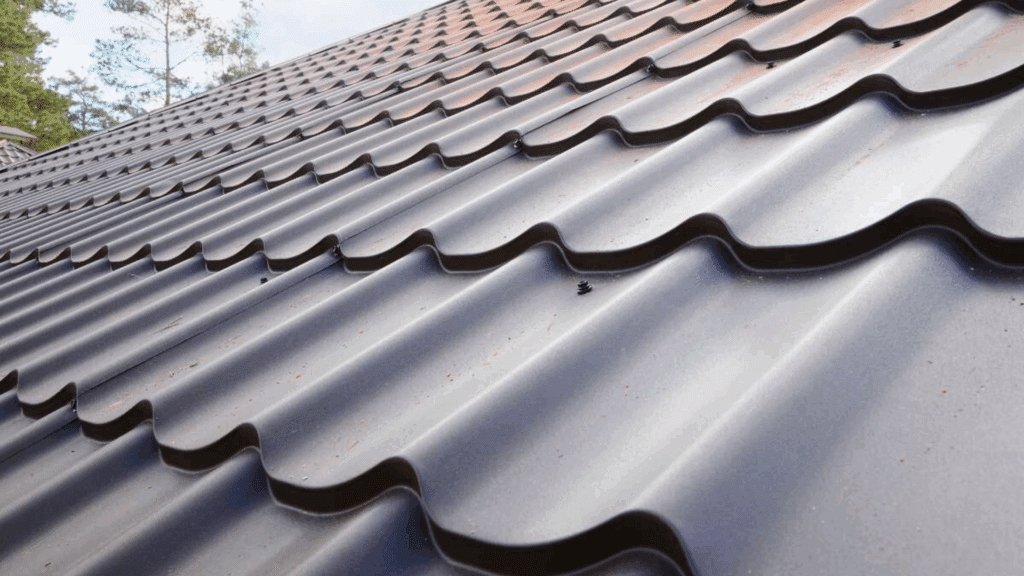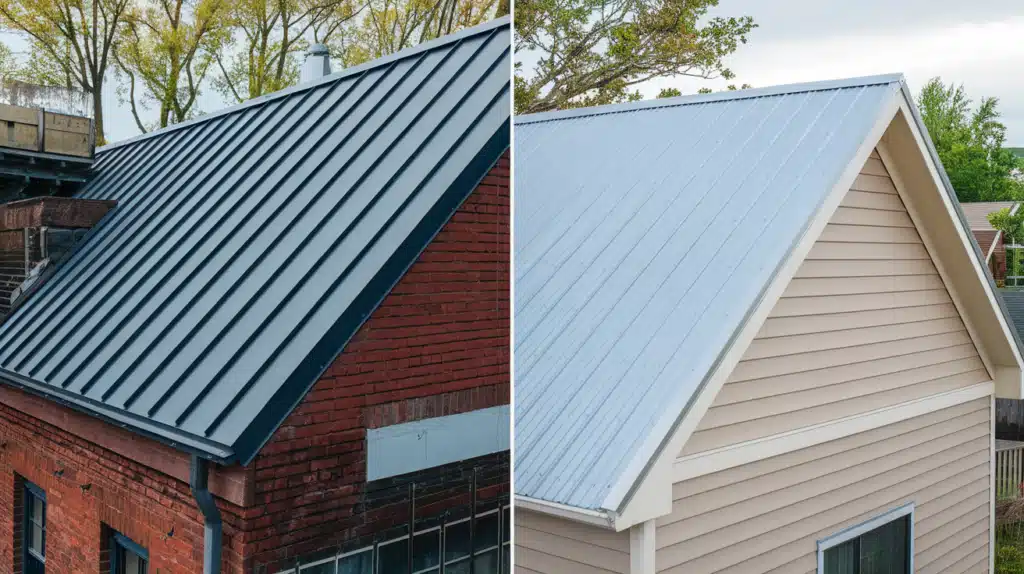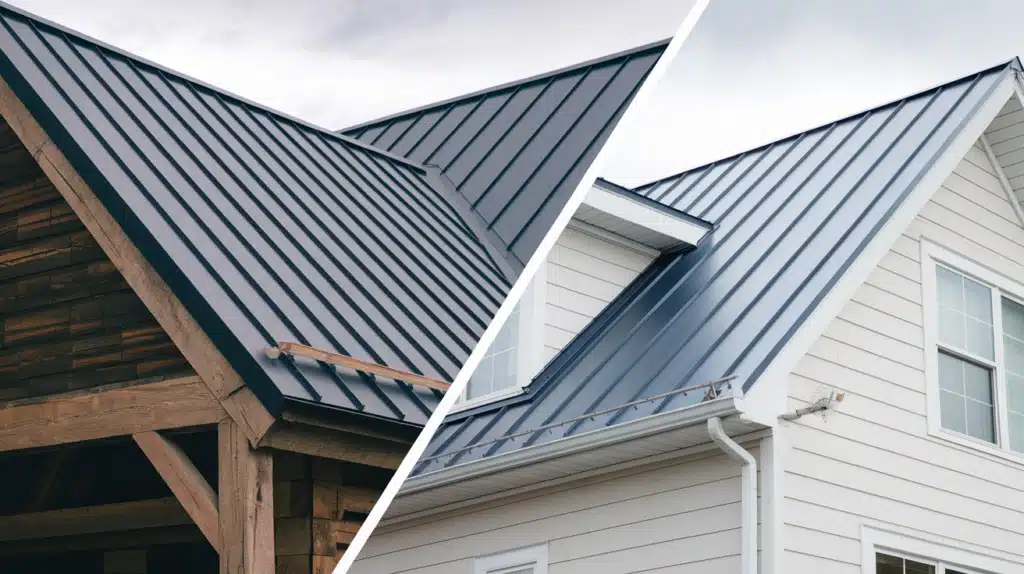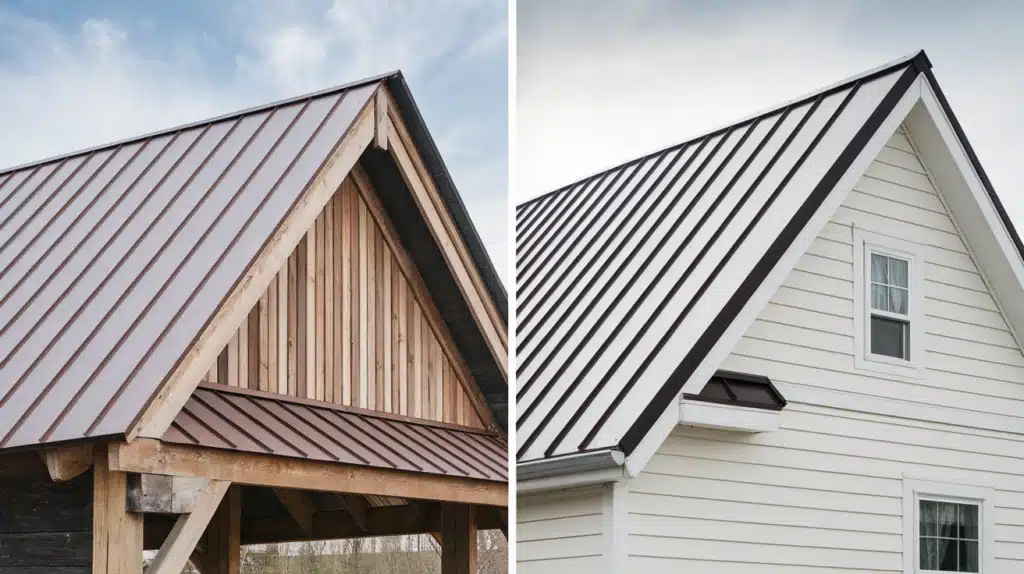When it comes to choosing the right metal roofing for your home, you may be undecided between 26-gauge and 29-gauge options.
It can be confusing to know which one will be the best fit for your needs. Both gauges offer benefits, but they differ in thickness, strength, and cost.
I’m here to help clear up the confusion and guide you toward making the best decision for your home.
If you’re wondering which option provides more durability, is worth the extra cost, or is better suited to your local climate, you’re in the right place.
By the end of this, you’ll have a clear understanding of what makes each gauge unique, so you can feel confident in your roofing choice.
Trust me, I’ll help you make an informed decision without any of the guesswork.
What is a Metal Roofing Gauge?

In metal roofing, the term “gauge” refers to the thickness of the metal used.
The key to understanding gauge is that the lower the number, the thicker the metal. For example, a 26-gauge roof is thicker than a 29-gauge roof.
The typical thickness for 26-gauge metal is about 0.48 mm, while 29-gauge metal is usually around 0.36 mm.
This difference in thickness can affect the strength and durability of the roof.
A thicker metal, like 26 gauge, is more resistant to damage from things like hail or strong winds, making it a better choice for areas with severe weather.
On the other hand, 29-gauge metal is lighter and easier to install, but it may not hold up as well in tough conditions.
Understanding how gauge impacts metal roofing helps in choosing the best option for a home’s needs.
26 Gauge vs. 29 Gauge Metal Roofing: Comparison

Choosing between 26-gauge and 29-gauge metal roofing depends on your specific needs, such as durability, budget, and climate.
This comparison helps highlight key differences to make an informed decision based on your location and building requirements.
1. Durability and Performance
26-Gauge Metal Roofing:
- More resistant to hail, heavy snow, and high winds.
- Less prone to denting from debris or foot traffic.
- Longer lifespan and better performance in extreme conditions.
29-Gauge Metal Roofing:
- Suitable for mild weather conditions but may not hold up well in harsh environments.
- More prone to damage and denting from impact.
- Shorter lifespan in areas with severe weather.
2. Cost Considerations
26-Gauge Metal Roofing:
- Higher upfront cost, but provides long-term savings through fewer repairs and replacements.
- Ideal for areas where durability is critical and harsh weather is common.
29-Gauge Metal Roofing:
- More budget-friendly initially.
- Might require more maintenance and repairs over time, especially in harsh climates.
- Suitable for those on a budget or in areas with mild weather.
3. Climate and Location
26-Gauge Metal Roofing:
- Best for regions with extreme weather, such as heavy snow, hail, or high winds.
- Provides superior protection against the elements.
29-Gauge Metal Roofing:
- Ideal for areas with moderate climates and minimal extreme weather.
- More suitable for structures in milder environments.
4. Application and Building Type
26-Gauge Metal Roofing:
- Often used in homes, commercial buildings, and structures needing added strength.
- Ideal for areas where long-term durability and weather resistance are required.
29-Gauge Metal Roofing:
- Commonly used for sheds, barns, and garages.
- Perfect for smaller, budget-conscious projects or areas with milder weather conditions.
5. Installation and Structural Considerations
26-Gauge Metal Roofing:
- Heavier, requiring stronger structural support for installation.
- More complex and expensive to install due to its weight.
29-Gauge Metal Roofing:
- Lighter and easier to handle during installation.
- Flexes more and may require careful handling to prevent damage during setup.
Quick Comparison Table
| Factor | 26-Gauge Metal Roofing | 29-Gauge Metal Roofing |
|---|---|---|
| Durability | More resistant to hail, heavy snow, and high winds. | Suitable for mild weather; more prone to damage in extreme conditions. |
| Cost | Higher upfront cost, but more cost-effective long-term due to fewer repairs. | More budget-friendly initially but may require more maintenance. |
| Climate Suitability | Ideal for areas with extreme weather conditions. | Best for mild climates with less severe weather. |
| Application and Building Type | Used for homes, commercial buildings, and areas needing added strength. | Common in sheds, barns, and garages, where budget is a priority. |
| Installation | Heavier and requires more structural support. | Lighter and easier to install, but may flex more during setup. |
| Lifespan | Longer lifespan due to thicker material and better performance in harsh conditions. | Shorter lifespan, especially in areas with severe weather. |
Which Gauge is Right for You?

When choosing between 26-gauge and 29-gauge metal roofing, the decision largely depends on your specific needs and priorities.
If durability and long-term protection are most important, especially in areas with extreme weather conditions like heavy snow, hail, or high winds, 26-gauge is the better choice.
It offers superior strength and will stand up to harsh elements over time. However, if you’re working with a tighter budget or live in a mild climate where severe weather is rare, 29-gauge may be more suitable.
It’s more affordable upfront but may require more maintenance in the long run.
For larger, long-term structures like homes and commercial buildings, 26-gauge provides added strength and reliability.
Meanwhile, for smaller projects like sheds or garages, 29-gauge can be a cost-effective option without compromising too much on performance in mild weather.
Ultimately, your location, budget, and roofing needs will determine which gauge is the best fit.
Common Mistakes to Avoid
- Choosing Based Solely on Price: While 29 gauge is cheaper, it may require more maintenance in the long run, especially in harsh climates.
- Ignoring Local Weather Conditions: Don’t overlook the importance of local weather patterns. A gauge suitable for one climate might not perform well in another.
- Underestimating the Importance of Installation: Make sure to factor in the installation complexity, especially with heavier 26-gauge roofing. It may need additional support and more time for installation.
Conclusion
Choosing the right metal roofing gauge comes down to understanding your needs and priorities.
If you live in an area with extreme weather, like heavy snow or strong winds, 26-gauge is a better option because it’s thicker, stronger, and more durable.
While it costs a bit more upfront, it could save money on repairs in the long run. On the other hand, if you’re on a budget or in a place with mild weather, 29-gauge can be a great choice.
It’s lighter, easier to install, and more affordable initially, but it may not last as long in harsh conditions.
I recommend considering the climate, the desired lifespan of your roof, and your budget.
Once you weigh these factors, you’ll have a better idea of which gauge fits your home and situation best.

